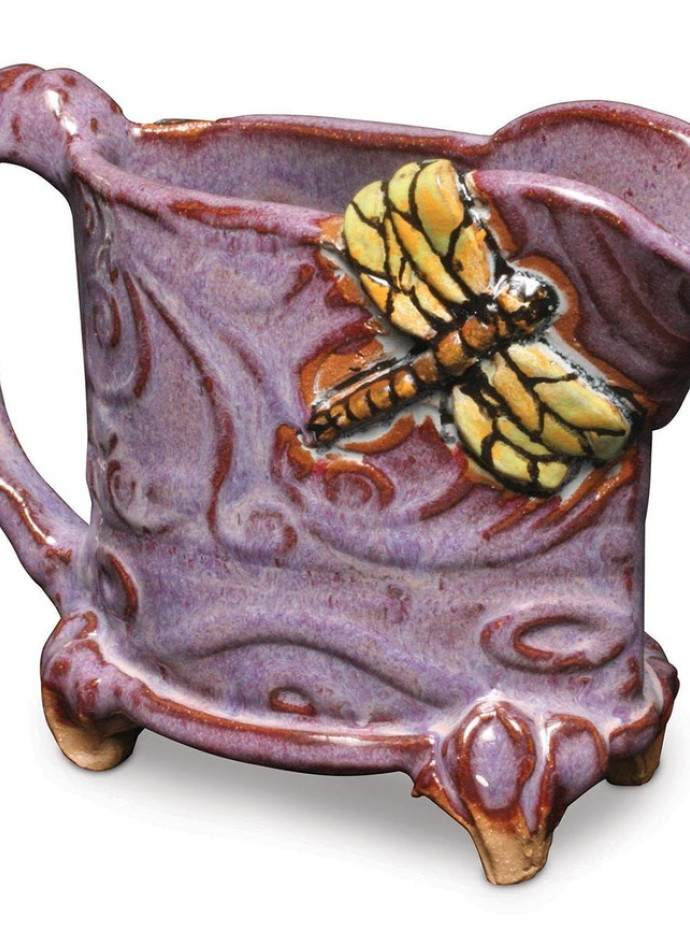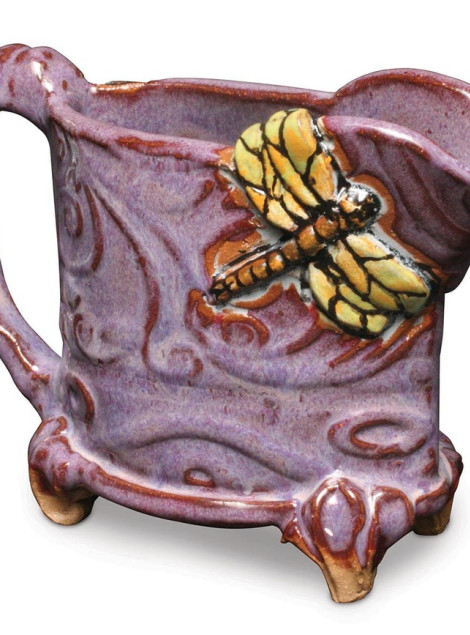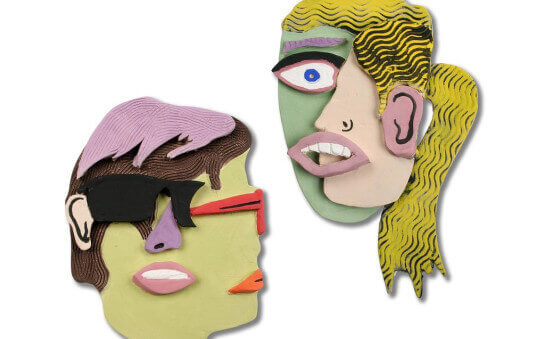Clay Pitchers

Handbuild with Textured Slabs and sprig molds.
There are so many possibilities in design for shape, style, texture, decoration and technique with these pitchers. This plan is designed for 4th grade to adult, all skill levels.
Create these pitchers from scratch. Students individually design their pitcher shape on paper, cut out templates from their design, and then start handbuilding in clay. There are many textures to choose from for this project: texture rollers, texture molds, handmade stamps, and found object textures. Students have additional choices for handles and feet, with the handle and feet sprig molds. There are also many decorative sprig molds to choose from.
Cross curriculum possibilities exist for a variety of themes from science or biology with frogs and fish; to social studies with cultural textures and sprig attachments; to history, with Mimbres and Islamic motifs and fossil textures and sprigs.
Supplies List
- Any Firing Clay
- Glaze that fits Chosen Clay
- Wire Clay Cutter
- Hardwood Rolling Pin
- Hardwood Thickness Strips
- Glaze Brushes
- Glaze Applicator
- Texture Molds
- Sprig Molds
- Textured Rollers
- Double-Ended Clay Shaper
- SLAB ROLLER MINI SRC
- Vinegar
- Wooden Throwing Ribs
- Velvet Underglazes

Preparation
Design and sketch pitchers: 3 to 4 inches tall (including spout and feet) x 4 to 5 inches wide (including handle).
Cut templates from sketches on paper
Make slabs
Roll slab, smooth and compress with plastic rib.
Apply Texture
Press texture into slab using a texture roller, stamps, or press slab into texture molds.
Cut out parts
Use paper template to cut out parts of pitcher. There are four parts to a basic pitcher: two sides (squares), one base (oval), and one spout (rectangle).
Score
Score sides at the ends to join, using a scratch tool, fork, etc. where the parts of the pitcher connect.
Slip or use Vinegar
Paint on small amount of vinegar (used instead of slip for the glue) on scored places and attach.
Join slabs
Reinforce seams with coils of clay, press and smooth gently.
Attach base
Score, paint on vinegar, and attach base to sides of pitcher. Press base to sides.
Seal Seams
Seal both inside and out to secure attached areas for a functional pitcher.
Position spout
Size up the spout and decide exactly where to place. Mark outside where spout goes.
Cut for spout
Cut along mark.
Attach Spout
Score, paint on vinegar, and attach spout. Smooth interior of spout carefully to connect and enhance pouring capabilities.
Cut spout to shape
If desired for design, cut corners off top of spout.
Smooth spout
Smooth end of spout for pourability.
Making Handle
Press the amount of clay needed into the handle sprig mold. Press and repress clay into mold.
Smoothing handle in mold
Smooth to flatten, from the center out, with a rubber rib.
To remove handle from mold
Roll a small clay coil and then flatten one end. Wet flat end with a bit of water, attach to clay at one end.
Handle removed and shaped
Lift up and quickly remove small clay coil. Shape ‘handle’ into a “C” for attaching after feet are attached.
Make feet
Make feet from sprig mold using same technique as handle.
Attach feet
Attach feet with larger half of foot wrapped gently around and up the outside of the base. Point bottom of feet up and smooth connections using wood smoothing tool.
Attach Handle
Attach handle and if desired, more decorative sprigs.
Smooth rim
Smooth rim and spout with chamois and fingers.
Firing
Slow dry with plastic draped over pitcher for 24 hours. Remove drape of plastic and continue drying until bone dry. Bisque fire pitcher to Cone 04 and finish by applying final glaze decoration. Glaze fire. Pitchers can be made with low fire (Cone 04) clay or mid/high fire (Cone 5/6) clay. Match glaze to clay type, Cone 04 clay with Cone 04 glaze, etc. Decoration on wet and leather hard clay can be done with Velvet underglazes before the bisque fire.




